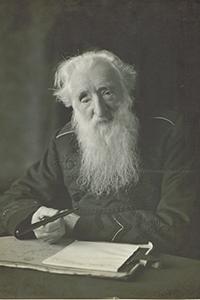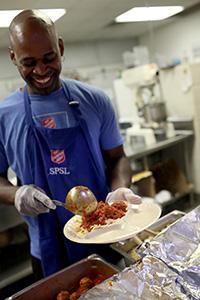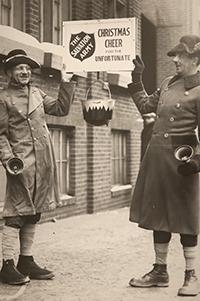Built to last: Celebrating 150 years
It began 150 years ago. A 36-year-old Methodist minister named William Booth and his wife, Catherine, began reaching out to drunkards, prostitutes and thieves in the slums of London, England. The Booths offered food, shelter, clothing, and the message of Christ.
 Thirteen years later, in 1878, The Salvation Army brand was born. By then, the Booths had amassed hundreds of volunteers and dozens of employees. One day, as William Booth (pictured) was proofing a copy of his ministry’s annual report, he noticed the phrase, “The Christian Mission is a volunteer army.” Raising an eyebrow, he crossed out the words “volunteer army” and replaced them with “Salvation Army.”
Thirteen years later, in 1878, The Salvation Army brand was born. By then, the Booths had amassed hundreds of volunteers and dozens of employees. One day, as William Booth (pictured) was proofing a copy of his ministry’s annual report, he noticed the phrase, “The Christian Mission is a volunteer army.” Raising an eyebrow, he crossed out the words “volunteer army” and replaced them with “Salvation Army.”
The Booths later adopted a credo: “Soup, soap and salvation.” They served in that same order, concluding that people in need will not bother listening to the Good News until their most basic needs are first met.
Today, exactly 150 years later, the credo still rings true. Across America and in 126 countries around the world, The Salvation Army – the second largest charity in America – continues to fight for millions of souls by demonstrating the love of Christ through food and shelter programs, rehabilitation services, disaster relief, and so much more.
 “The Booths’ model of service remains timeless,” affirmed Lt. Col. Robert Thomson, Commander of The Salvation Army of Minnesota and North Dakota, which formed in 1886. “The world has changed in the past 150 years. The effectiveness of serving in the name of Jesus Christ has not.”
“The Booths’ model of service remains timeless,” affirmed Lt. Col. Robert Thomson, Commander of The Salvation Army of Minnesota and North Dakota, which formed in 1886. “The world has changed in the past 150 years. The effectiveness of serving in the name of Jesus Christ has not.”
It never will, either. Because when you look back at The Salvation Army of yesteryear, it’s clear that the same programs we offered then still work now. And as our track record suggests, these programs will last well into the future, if not forever.
Example: The first incarnate of The Salvation Army Rehabilitation Center in Minneapolis opened in 1913, in the same building that is now the luxurious Nicollet Island Inn. The center, today located in the warehouse district of downtown Minneapolis, continues to provide long-term residential care for men battling addiction. And now, after 102 years, the center is again trying to relocate to a new facility, ensuring that the program continues for decades to come.
“The Salvation Army is proud of our 150-year heritage, and grateful for the millions of volunteers and donors who got us here,” Thomson said. “Here’s to 150 more.”
Explore our history
Summing up 150 years of service in one little Web story isn’t easy. But the links below certainly help. Click each of them for an expanded look at important moments in local and worldwide Salvation Army history, along with inspiring facts and stories from the present.
150 Reasons: Read any of 150 amazing true stories about people from across the world whose lives changed with help from The Salvation Army.
 Origin of the Red Kettle: They’re one of the most iconic and successful fundraising tools of all time. How’d they start?
Origin of the Red Kettle: They’re one of the most iconic and successful fundraising tools of all time. How’d they start?
William and Catherine Booth: Dig deeper into the lives of the husband and wife who started it all.
Twin Cities history: People hurled rotten tomatoes at Salvation Army officers when they first arrived in Minneapolis and St. Paul in 1886. Learn more about the early Twin Cities Salvation Army.
Historic photos: The Minnesota Historical Society has 140 archaic photographs depicting old-time Salvation Army activities in Minnesota.
Donut girls: The Salvation Army popularized donuts in America during World War I after Salvation Army “Donut Lassies” served soldiers battling on the front lines.
Great Depression: An 87-year-old Twin Cities woman recalls receiving help from The Salvation Army in the 1930s.
Join The Salvation Army as we begin our next 150-year journey. Every dollar you donate counts, and volunteer opportunities abound.
